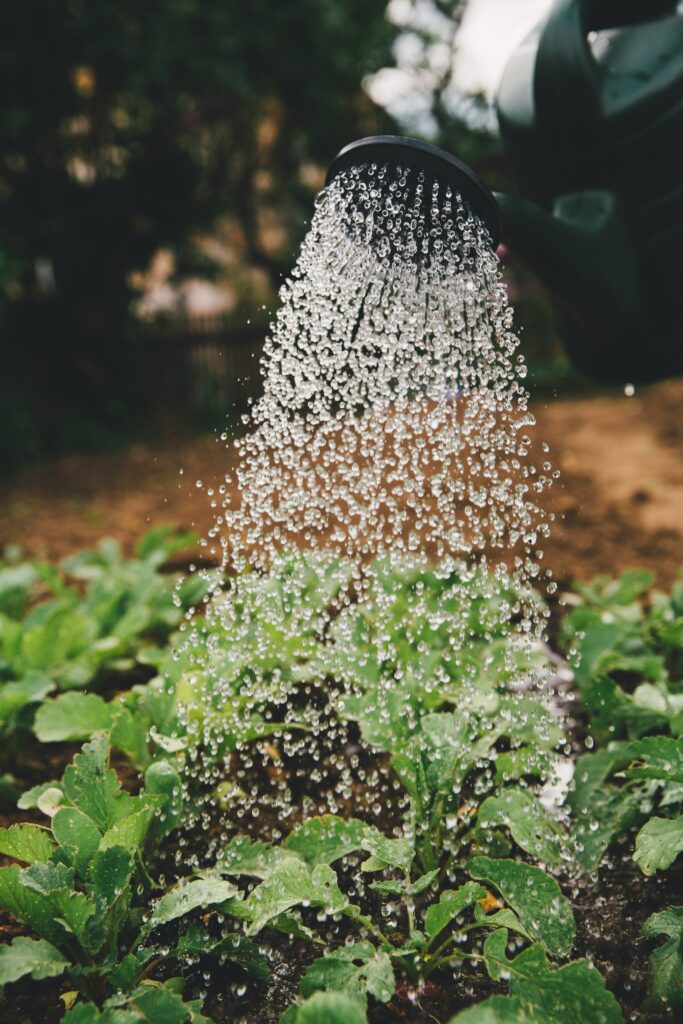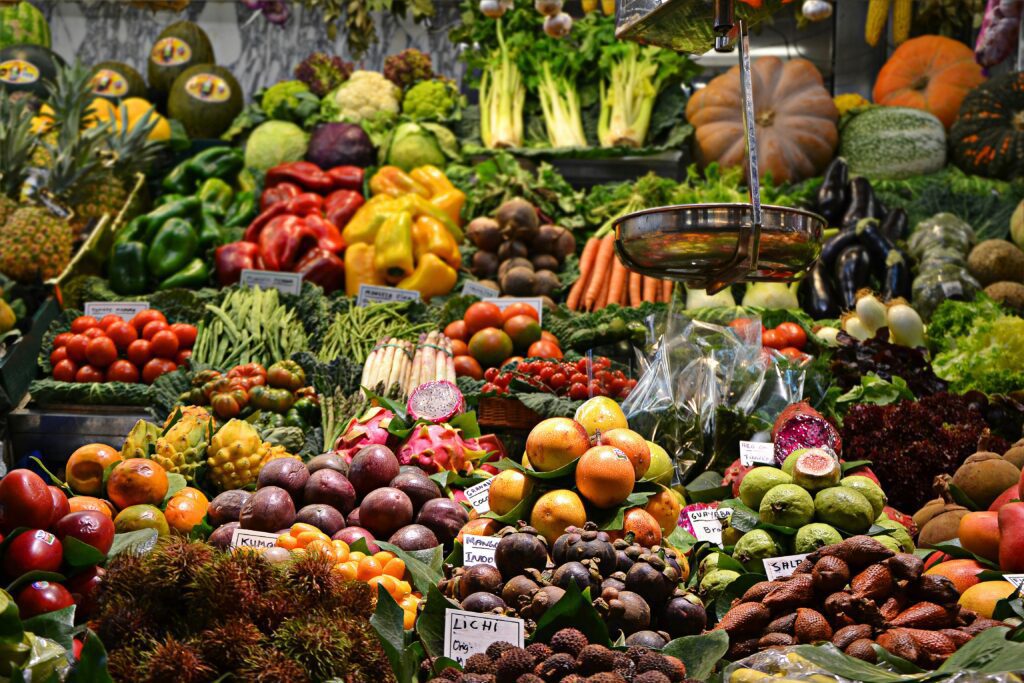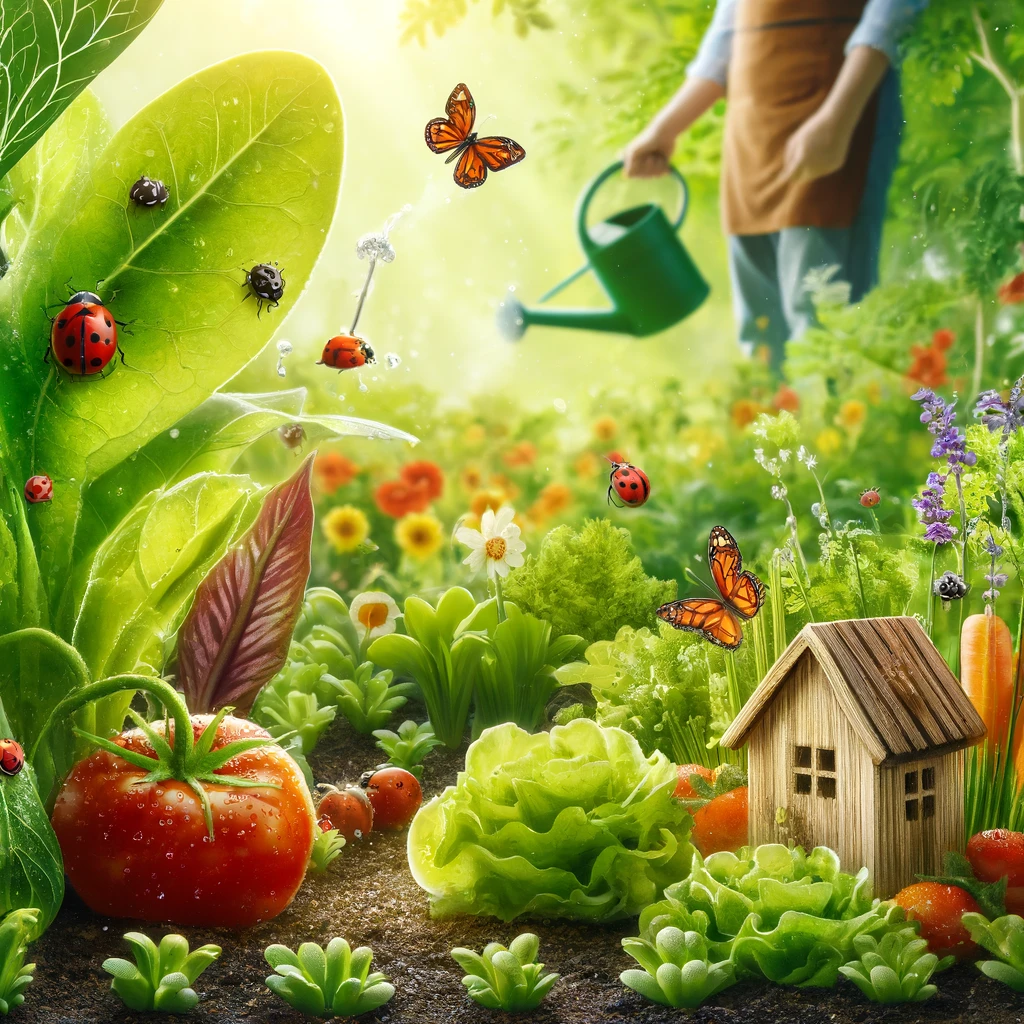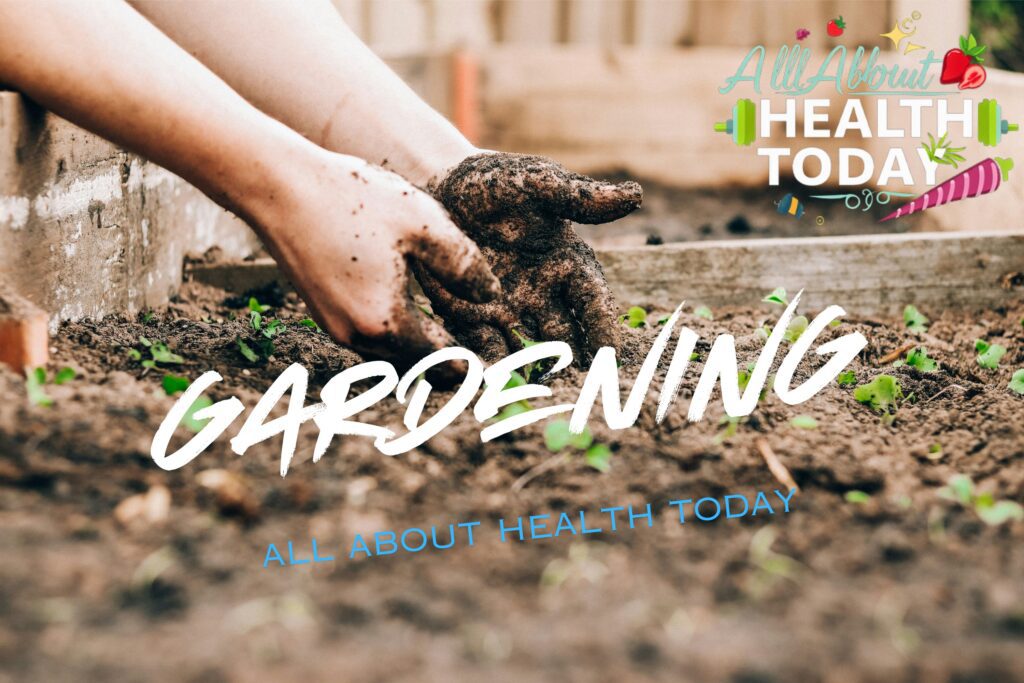Table of Contents
The Joy of Homegrown Organic Vegetables 🥕
Imagine stepping out into your backyard or balcony and picking fresh, vibrant vegetables straight from your garden. Not only do they taste better, but they’re also packed with nutrients and free from harmful chemicals. Growing your own organic vegetables at home is easier than you think, and this guide will show you how. From preparing the soil to harvesting your produce, we’ll cover everything you need to know to cultivate a flourishing organic garden. By the end of this article, you’ll be ready to enjoy the satisfaction and health benefits of homegrown vegetables.
Why Choose Organic Gardening? 🤔
Organic gardening is more than just a trend, it’s a commitment to cultivating food in a way that is harmonious with nature and has been done by our ancestors for generations.
By choosing to grow vegetables organically, you avoid the use of synthetic pesticides and fertilizers, ensuring that your food is free from harmful chemicals.
This not only benefits your health but also supports the environment by promoting biodiversity and reducing pollution. Organic gardening also enhances the soil’s health, making it more fertile and resilient over time. Moreover, the taste and nutritional value of organically grown vegetables are often superior to their conventionally grown counterparts. Embracing organic gardening is a step forward towards a healthier lifestyle and a more sustainable world.

Getting Started: Preparing Your Soil 🪴
The foundation of a successful organic vegetable garden is healthy, fertile soil. Before planting, it’s crucial to prepare your soil to ensure it provides the necessary nutrients for your vegetables to thrive.
- Test Your Soil: Start by testing your soil’s pH and nutrient levels. You can purchase a soil test kit from a garden center or send a sample to a local extension service. The ideal pH for most vegetables is between 6.0 and 7.0.
- Improve Soil Quality: Based on your soil test results, you may need to amend your soil. Add organic matter such as compost, aged manure, or leaf mold to improve soil structure, increase nutrient content, and enhance water retention.
- Organic Fertilizers: Use organic fertilizers to provide essential nutrients. Bone meal, blood meal, and fish emulsion are excellent sources of nitrogen, phosphorus, and potassium. Avoid synthetic fertilizers, as they can harm beneficial soil organisms.
- Mulching: Apply a layer of organic mulch, such as straw, wood chips, or grass clippings, to help retain moisture, suppress weeds, and gradually improve soil quality as it decomposes.
- Proper Drainage: Ensure your garden beds have good drainage to prevent waterlogging, which can lead to root rot and other problems. Raised beds can be a great solution if your garden area has poor drainage.
Preparing your soil properly sets the stage for a bountiful harvest. With nutrient-rich, well-draining soil, your vegetables will have the best possible start.
Choosing the Right Vegetables for Your Garden
Selecting the right vegetables to grow is a crucial step in establishing a successful organic garden. Your choices should be influenced by your local climate, the available space, and your personal preferences.

- Know Your Climate: Different vegetables thrive in different climates. Research the hardiness zone for your area and choose vegetables that are well-suited to your region. For example, leafy greens like lettuce and spinach do well in cooler climates, while tomatoes and peppers thrive in warmer conditions. USDA Plant Hardiness Map
- Space Considerations: If you have limited space, consider growing vegetables that have a high yield per square foot, such as radishes, carrots, and leafy greens. Vertical gardening can also maximize space by allowing you to grow vining plants like beans and cucumbers on trellises.
- Easy-to-Grow Vegetables: For beginners, start with vegetables that are known to be easy to grow and maintain. Some beginner-friendly options include tomatoes, zucchini, beans, and herbs like basil and parsley.
- Succession Planting: To maximize your harvest, consider succession planting. This involves planting a new crop immediately after harvesting the previous one. For example, after harvesting early spring peas, you can plant a summer crop of beans in the same spot.
- Personal Preferences: Ultimately, grow vegetables that you enjoy eating. This ensures that your efforts in the garden will result in a harvest that you will be excited to consume and share.
By carefully selecting the right vegetables, you can ensure a productive and enjoyable gardening experience. Tailor your garden to your tastes and needs, and you’ll be rewarded with a bountiful, delicious harvest.
Setting Up Your Garden Beds
Creating the right environment for your vegetables is essential for a thriving garden. Setting up your garden beds correctly will provide your plants with the best conditions for growth.
- Choosing the Location: Select a location that receives at least 6-8 hours of direct sunlight per day. Most vegetables need full sun to produce a good yield. Ensure the area has good air circulation and is protected from strong winds.
- Types of Garden Beds: There are several types of garden beds to consider:
- In-Ground Beds: These are traditional garden beds where you plant directly into the ground. They are best suited for gardens with well-draining soil.
- Raised Beds: Raised beds are elevated garden plots that can be filled with high-quality soil. They provide better drainage, reduce soil compaction, and make gardening easier on your back and knees.
- Container Gardening: If space is limited, container gardening is a great option. Use pots, planters, or even repurposed containers to grow vegetables. Ensure they have drainage holes to prevent waterlogging.
- Preparing the Beds: Once you’ve chosen your bed type, prepare the soil by adding organic matter such as compost or well-rotted manure. This enriches the soil, improves its structure, and provides essential nutrients.
- Double Digging: For in-ground and raised beds, consider double digging to loosen the soil to a depth of 12-18 inches. This enhances root penetration and improves drainage.
- Spacing and Layout: Plan the layout of your garden beds to ensure proper spacing between plants. Overcrowding can lead to poor air circulation and increase the risk of disease. Follow the spacing recommendations on seed packets or plant labels.
- Irrigation Systems: Setting up an efficient irrigation system is crucial for maintaining soil moisture. Drip irrigation and soaker hoses are excellent choices for delivering water directly to the plant roots, reducing water waste and preventing fungal diseases.
🔧🌱 Boost Your Gardening Game! 🌱🔧
Ready to make your garden bed setup a breeze? Check out the WNJ Garden Tool Set, 14PCS Complete Set of Heavy-Duty Stainless Steel Gardening Hand Tools. This stylish and durable tool bag, equipped with non-slip rubber grips, has everything you need to prepare and maintain your garden beds with ease. Perfect for both beginners and seasoned gardeners, this kit makes an ideal gift for anyone who loves to garden. 🌿🌼
Planting and Caring for Your Vegetables
Once your garden beds are prepared, it’s time to plant your vegetables and ensure they receive the care they need to thrive.
- Planting Seeds and Seedlings:
- Seeds: Sow seeds according to the depth and spacing recommendations on the seed packets. Some seeds, like carrots and radishes, are best sown directly into the garden, while others, like tomatoes and peppers, can be started indoors and transplanted.
- Seedlings: When transplanting seedlings, dig a hole large enough to accommodate the root ball. Gently remove the seedling from its container, place it in the hole, and firm the soil around it. Water thoroughly after planting.
- Watering: Proper watering is crucial for vegetable growth. Water your plants early in the morning to minimize evaporation and allow leaves to dry before evening, reducing the risk of fungal diseases. Most vegetables need about 1-2 inches of water per week, either from rainfall or irrigation.
- Fertilizing: Use organic fertilizers to feed your plants throughout the growing season. Compost, worm castings, and fish emulsion are excellent choices. Follow the recommended application rates and timing to avoid over-fertilizing, which can harm your plants.
- Mulching: Apply a layer of organic mulch around your plants to conserve moisture, suppress weeds, and regulate soil temperature. Mulching also adds organic matter to the soil as it decomposes.
- Weeding: Keep your garden beds free of weeds, which compete with your vegetables for nutrients, water, and light. Regularly inspect your garden and remove weeds by hand or with a hoe.
- Supporting Plants: Some vegetables, like tomatoes, cucumbers, and beans, benefit from support structures. Use stakes, cages, or trellises to keep plants upright, improve air circulation, and make harvesting easier.
🔄🌿 Supercharge Your Soil with Easy Composting! 🌿🔄
Ready to give your garden the nutrient boost it needs? The Compost Tumbler Bin Composter Dual Chamber 43 Gallon is your perfect solution! This innovative composter accelerates the breakdown of organic waste, turning kitchen scraps and garden clippings into rich, fertile compost in no time. With its dual-chamber design, you can have a continuous cycle of compost, ensuring your garden always has a fresh supply of nutrients.
✨ Bonus Offer: Get a pair of Pearson’s Gardening Gloves with your purchase! These durable, comfortable gloves make handling compost and working in your garden a breeze.
Say goodbye to chemical fertilizers and hello to healthy, organic soil. 🌱🌟
Natural Pest Control Methods
Keeping pests at bay without resorting to chemical pesticides is a key component of organic gardening. Here are some effective natural pest control methods to protect your vegetables:

- Companion Planting: Planting certain crops together can naturally repel pests. For example, marigolds deter nematodes, while basil can keep mosquitoes and flies away from tomatoes.
- Physical Barriers: Use row covers, netting, and plant collars to physically block pests from reaching your plants. These barriers are especially useful for protecting young seedlings from insects and birds.
- Beneficial Insects: Encourage beneficial insects like ladybugs, lacewings, and predatory beetles that prey on common garden pests. Planting flowers like dill, fennel, and yarrow can attract these helpful insects to your garden.
- Homemade Sprays: Create natural insecticidal sprays using ingredients like neem oil, garlic, and chili peppers. These can effectively deter pests without harming beneficial insects or the environment. For example, a simple garlic spray can ward off aphids and spider mites.
- Handpicking: Regularly inspect your plants for pests and remove them by hand. This method is especially effective for larger insects like caterpillars and beetles.
- Trap Crops: Plant sacrificial crops that attract pests away from your main garden. For instance, planting nasturtiums can draw aphids away from your vegetables.
- Healthy Soil: Maintaining healthy soil can make plants more resistant to pests and diseases. Regularly adding compost and practicing crop rotation can help keep your soil in top condition.
Harvesting and Enjoying Your Organic Produce
One of the most rewarding aspects of organic gardening is harvesting and enjoying the fruits of your labor. Knowing when and how to harvest your vegetables can make a big difference in their taste and nutritional value.
- Timing the Harvest: Different vegetables have specific signs that indicate they are ready to be harvested. For example, tomatoes should be fully colored and slightly soft to the touch, while carrots are ready when their tops reach a certain diameter. Refer to seed packets or gardening guides for specific harvesting times for each vegetable.
- Harvesting Techniques: Use the right tools and techniques to harvest your vegetables to avoid damaging the plants. For leafy greens, cut the outer leaves first, allowing the inner leaves to continue growing. For root vegetables, gently loosen the soil around the plant before pulling it out.
- Morning Harvest: Harvest vegetables in the morning when they are most hydrated and have the best flavor. The cool temperatures and high moisture content of the early morning help preserve the vegetables’ freshness.
- Post-Harvest Care: Properly store your harvested vegetables to maintain their quality. Leafy greens can be stored in the refrigerator, while root vegetables like potatoes and onions should be kept in a cool, dark place. Wash vegetables only when you’re ready to use them to prevent spoilage.
- Enjoying Your Produce: Incorporate your fresh, organic vegetables into delicious meals. Whether it’s a vibrant salad, a hearty stew, or a refreshing smoothie, the possibilities are endless. Share your bounty with friends and family, or preserve the excess by canning, freezing, or drying.
Harvesting at the right time and caring for your produce properly ensures that you enjoy the full benefits of your organic garden. The taste and satisfaction of eating homegrown vegetables are unmatched, making all your hard work worthwhile.
🥤🌿 Blend Your Harvest into Smoothies! 🌿🥤 Check out our 10 Delicious Smoothie Recipes for nutritious and refreshing ideas. Sip your way to health!






